ATG Split Squat is a popular exercise that has been gaining popularity in the fitness world thanks to the knees over toes guy. This exercise is also known as the Ass-to-Grass Split Squat and is a great way to improve lower body mobility and flexibility while increasing functional strength. The ATG Split Squat is a unilateral exercise that targets the quadriceps, hamstrings, glutes, and calves.
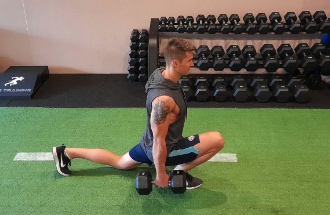
Key Takeaways
- ATG Split Squat is a unilateral exercise that targets the quadriceps, hamstrings, glutes, and calves.
- Proper form and technique are essential to avoid injury and maximize the benefits of ATG Split Squat.
- ATG Split Squat is a great way to improve lower body mobility and flexibility while increasing functional strength.
Understanding ATG Split Squat
The ATG Split Squat is a variation of the traditional split squat exercise that emphasizes a deep range of motion. The acronym “ATG” stands for “Ass-to-Grass,” which refers to the goal of lowering the body until the glutes almost touch the ground. The ATG Split Squat requires a significant amount of mobility and flexibility, particularly in the hips, ankles, and knees.
Benefits of ATG Split Squat
The ATG Split Squat is a popular exercise that offers numerous benefits to the body. Here are some of the benefits of performing ATG Split Squats:
Increases Flexibility & Joint Health
The ATG Split Squat is an excellent exercise for improving lower body flexibility. This exercise requires you to effectively perform a deep squat, which helps to increase the flexibility of your hips, knees and ankles. Improved hip and ankle flexibility is directly linked to reduced risk of injury and overall athletic performance.
The movement can also help to improve joint health by increasing the range of motion in your hips, knees, and ankles. This exercise can also help to strengthen the muscles around your joints, which can help to reduce the risk of injury.
Builds Muscle
ATG Split Squats are an effective way to build muscle in your lower body. This exercise targets your quadriceps, glutes, and hamstrings, which are some of the largest muscles in your body. By performing ATG Split Squats regularly, you can increase muscle mass, improve muscular conditioning, and enhance your overall physique.
Enhances Balance and Coordination
ATG Split Squats require you to maintain balance deep into the range of movement which can be not only beneficial for sports and other physical activities but overall longevity and health.
Muscles Worked in ATG Split Squat
The ATG Split Squat is a compound exercise that targets multiple muscle groups in the lower body. This exercise primarily works the quadriceps, glutes, and hamstrings, but also engages the core muscles to maintain balance and stability throughout the movement.
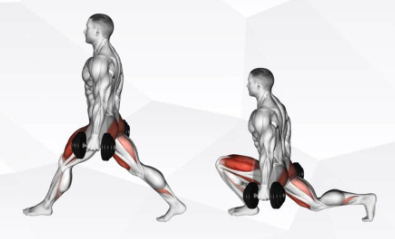
Quadriceps
The quadriceps muscles are located in the front of the thigh and are responsible for extending the knee joint. During the ATG Split Squat, the quadriceps are heavily engaged to lift the body up and down. This exercise targets the rectus femoris, vastus lateralis, vastus intermedius, and vastus medialis muscles of the quadriceps.
Glutes
The glutes, or gluteus maximus, are the largest muscle group in the body and are responsible for hip extension, abduction, and external rotation. During the ATG Split Squat, the glutes are activated to stabilize the hip joint and support the movement of the leg. This exercise targets the gluteus maximus, as well as the gluteus medius and gluteus minimus muscles.
Hamstrings
The hamstrings are located in the back of the thigh and are responsible for knee flexion and hip extension. During the ATG Split Squat, the hamstrings are engaged to support the movement of the leg and maintain balance. This exercise targets the biceps femoris, semitendinosus, and semimembranosus muscles of the hamstrings.
Core Muscles
The core muscles, including the rectus abdominis, obliques, and erector spinae, are activated during the ATG Split Squat to maintain balance and stability throughout the movement. These muscles work together to keep the torso upright and prevent excessive forward or backward leaning.
Adductors
The adductors, located on the inside of the thigh, are also activated during the ATG Split Squat to stabilize the hip joint and support the movement of the leg. These muscles include the adductor longus, adductor brevis, adductor magnus, pectineus, and gracilis.
How to do the ATG Split Squat
To perform the ATG split squat:
- Start in an extended split stance position with one foot in front of the other.
- The front foot should be flat on the ground, and the back foot should be on the ball of the foot.
- Keep the torso upright and engage the core.
- Lower the back knee to the ground, keeping the weight predominantly shifted on the front foot.
- Descend until the back knee touches the ground or hovers just above it.
- Push through the front foot to return to the starting position.
- Repeat for reps on one side before switching to the other side.
It is important to perform the ATG split squat with proper form to avoid injury and maximize results. Here are some tips:
- Keep the front knee in line with the toes.
- Keep the back foot stable and avoid rolling onto the toes.
- Keep the torso upright and avoid leaning forward.
- Lower the back knee as far as possible without discomfort or pain.
Performing a perfect rep of the ATG split squat involves proper technique, control, and range of motion. It is recommended to start with bodyweight only and gradually increase the resistance as strength and form improve.
ATG Split Squat Progression
The ATG split squat is a challenging exercise that requires a lot of strength and flexibility. It is important to progress gradually to avoid injury and ensure proper form. Here are some progressions to help you master the ATG split squat.
Bodyweight Split Squat
The bodyweight split squat is the first step in mastering the ATG split squat. Start by standing with your feet shoulder-width apart and take a big step forward with one foot. Lower your body until your back knee is just above the ground. Keep your front knee in line with your toes and your back straight. Push back up to the starting position and repeat on the other side.
Bulgarian Split Squat
The Bulgarian split squat is a variation of the split squat that requires more stability and strength. Start by standing about two feet in front of a bench or step. Place one foot on the bench and take a big step forward with the other foot. Lower your body until your back knee is just above the ground. Keep your front knee in line with your toes and your back straight. Push back up to the starting position and repeat on the other side.
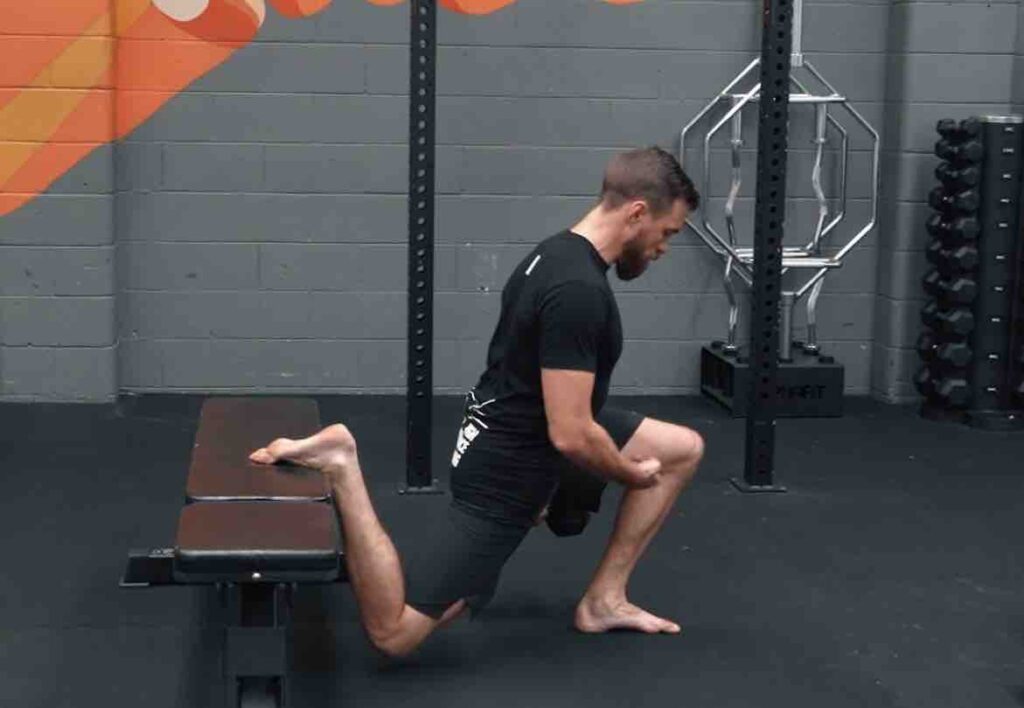
Weighted Split Squat
Once you have mastered the bodyweight and Bulgarian split squat, you can start adding weight to the exercise. Hold a dumbbell or kettlebell in each hand and perform the split squat as described above. Make sure to keep your form and avoid rounding your back.
Pistol Squat
The pistol squat is a great single-leg, bodyweight alternative to the ATG split squat. If you have no equipment and want to progress your ability in the movement, both options can be used in a balanced training program to provide maximum impact.
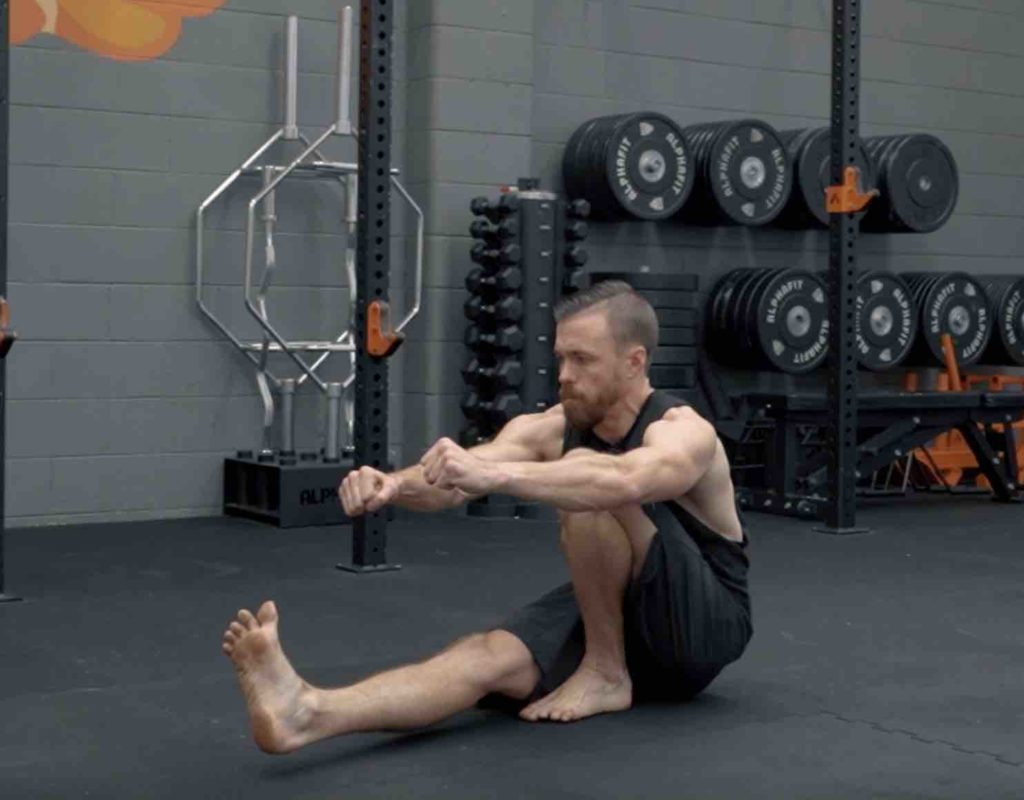
Alternatives to ATG Split Squat
If you are unable to perform the ATG split squat, there are other exercises you can do to strengthen your legs. Lunges and step-ups are great alternatives that work similar muscle groups. Nordic curls are also a great exercise for developing strong and resilient hamstrings.
Related Posts:
- Nordic Curls: Mastering the Ultimate Exercise for Hamstrings
- The Split Squat
- Master The Pistol Squat In 7 Steps
- Bryan Johnson Blueprint: Daily Routine, Supplements & Protocol
Equipment and Variations
The ATG split squat requires minimal equipment, making it a convenient exercise to perform at home or in the gym. All that is needed is a flat surface to stand on and a pair of dumbbells or a barbell for added resistance. However, some variations of the exercise may require additional equipment.
One variation of the ATG split squat is the band-assisted split squat. This involves using a resistance band to assist with the movement, making it easier to perform the exercise with proper form. Another variation is the elevated split squat, which involves standing on a platform or bench to increase the range of motion and challenge the muscles further.
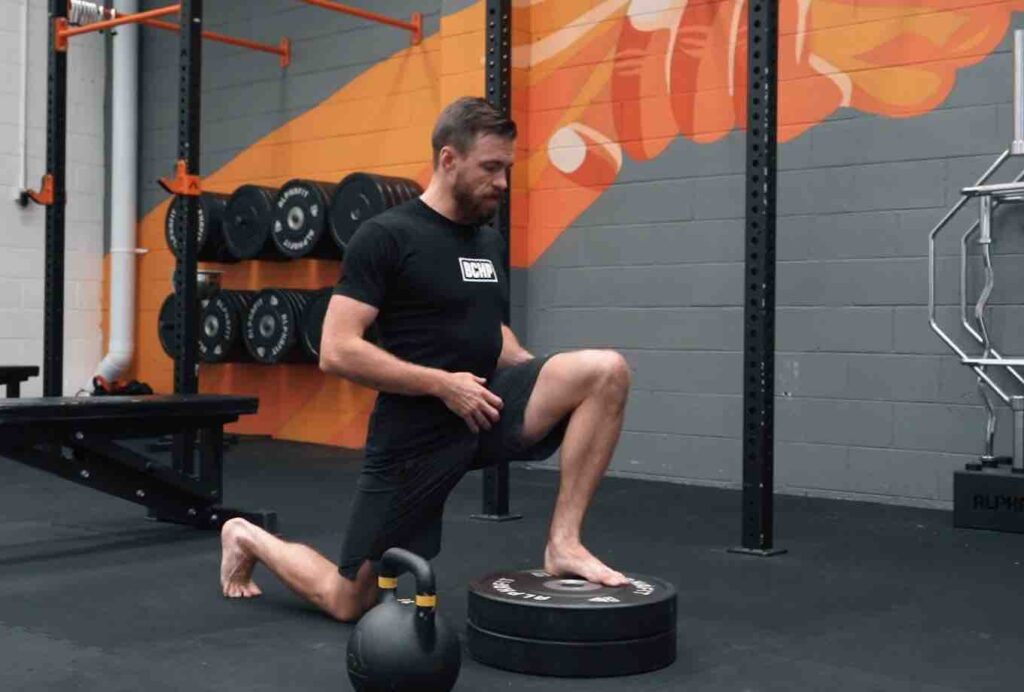
When performing the ATG split squat, it is important to use proper form and technique to avoid injury. This includes keeping the back straight, chest up, and core engaged throughout the movement. It is also important to keep the front knee in line with the ankle and not let it extend past the toes.
Below is a table summarizing some of the equipment and variations that can be used with the ATG split squat:
| Equipment/Variation | Description |
|---|---|
| Dumbbells/Barbell | Additional resistance for the exercise |
| Resistance Band | Assists with the movement |
| Platform/Bench | Elevates the exercise for increased range of motion |
| Slant Board | Can be used to perform the exercise at an angle for added challenge |
Incorporating different variations of the ATG split squat can help to target different muscle groups and add variety to a workout routine. It is important to choose variations that are appropriate for one’s fitness level and goals.
Related Posts:
Common Mistakes and Corrections
Performing the ATG Split Squat can be challenging, and there are several common mistakes that people make. Correcting these mistakes can help to improve the effectiveness of the exercise and prevent injuries. Here are some of the most common mistakes and corrections:
Knee Tracking
One of the most important things to keep in mind when performing the ATG Split Squat is proper knee tracking. The front knee should be tracking directly over the toes, depending on limb length, the knee may go past the toes as long as it does not cause undue stress in the movement or pain.
Leaning Too Far Forward
Another common mistake is leaning too far forward during the exercise. This can put excessive strain on the front knee and make it difficult to maintain balance. To correct this, focus on keeping the torso upright throughout the movement and your weight split across both feet. You can also try placing your hands on your hips or holding onto a stable object for balance.
Incorrect Leg Positioning
Finally, incorrect leg positioning is another common mistake. The front foot should be positioned far enough forward so that the knee is directly over the ankle with the ability to go past the toes if required, and the back foot should be positioned far enough back so that the front leg isn’t doing all the work
To correct this, focus on finding the right position for your feet and adjusting as necessary. You can also use a mirror to check your form and make sure that your legs are in the correct position.
Injury Prevention and Safety Measures
When performing ATG split squats, it is important to take certain safety measures to prevent injury. Here are some tips to keep in mind:
Proper Form
The most important safety measure is to maintain proper form throughout the exercise. This means keeping the knees in line with the toes, keeping the chest up, and maintaining a neutral spine. Proper form will help prevent knee pain and other injuries.
Warm-Up
Before performing ATG split squats, it is important to warm up properly. A good warm-up can help prevent injury and improve performance. One effective warm-up exercise is hip mobility exercises, which can help improve range of motion and reduce the risk of injury.
Gradual Progression
When starting out with ATG split squats, it is important to start with a light weight and gradually increase the weight over time. This will allow the muscles and joints to adapt to the exercise and reduce the risk of injury.
Knee Health
ATG split squats can be beneficial for knee health if performed correctly. However, if done incorrectly, they can lead to knee pain and injury. To prevent knee pain, it is important to keep the knees in line with the toes and avoid excessive forward movement of the knees.
Safety Equipment
While there is no mandatory equipment for ATG split squats, using safety equipment such as knee sleeves or wraps can help prevent injury and provide additional support to the knees.
By following these safety measures, you can reduce the risk of injury and enjoy the benefits of ATG split squats.
Related Posts:
- Hip Mobility: 14 Exercises to Improve Your Range of Motion
- Improve Your Ankle Mobility In 4 Simple Steps
- How To Improve Squat Mobility In 4 Simple Steps
Frequently Asked Questions
What are the benefits of doing ATG split squats?
ATG split squats are an excellent exercise for building lower body strength, improving balance, and increasing flexibility. They can also help improve overall athletic performance and reduce the risk of injury.
What muscles are worked during ATG split squats?
Split squats primarily work the quadriceps, hamstrings, and glutes. They also engage the core, hip flexors, and calf muscles. The ATG split squat, places a greater emphasis on the glutes and hamstrings, making it an effective exercise for targeting these muscle groups.
What are some variations of split squats?
There are several variations of split squats that can be used to target different muscle groups or add variety to your workout routine. Some popular variations include the Bulgarian split squat, reverse lunge, walking lunge, and lateral lunge. These variations can be performed with bodyweight or with added resistance such as dumbbells or a barbell.
Is the ATG split squat recommended for beginners?
The ATG split squat can be a challenging exercise, especially for beginners. It requires good mobility and stability in the hips, knees, and ankles. It is recommended that beginners start with basic split squats and gradually progress to the ATG split squat as their mobility and strength improve.
Can the ATG split squat help with knee pain?
The ATG split squat can be an effective exercise for reducing knee pain and improving knee function. By strengthening the muscles around the knee joint, such as the quadriceps and hamstrings, the ATG split squat can help improve knee stability and reduce the risk of injury.
What is the ATG position in split squats?
The ATG position in split squats refers to the bottom position of the exercise where the back knee almost touches the ground and the front thigh is parallel to the ground. This position requires a greater range of motion and can increase the activation of the glutes and hamstrings.
References
- Schoenfeld B. J. (2010). Squatting kinematics and kinetics and their application to exercise performance. Journal of strength and conditioning research, 24(12), 3497–3506.